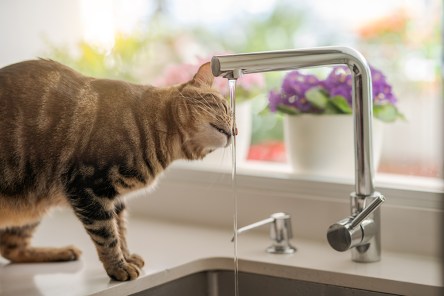The cost of water can be deceptively low — it doesn’t include the energy expenses of pumping and heating the water. When you evaluate water and energy efficiency together, you’re in a better position to maximize resource and cost savings. Multifamily companies can get some quick wins with minimal effort and no (or low) capital expenditure. All you need to do is make some changes to operations and maintenance practices along with minor retrofits or replacements as needed. The Environmental Protection Agency’s (EPA) WaterSense program recently shared strategies to save energy and water in the webinar “Reducing Costs with Quick Water Wins.” WaterSense is a voluntary program launched by the EPA in 2006 that provides a simple way to identify water-efficient products, programs and practices. In the webinar, the EPA’s Tara O’Hare highlighted the connection between water and energy, often referred to as the energy-water nexus, since every gallon of water has an energy footprint for pumping, moving, heating and treating water. To keep costs low, WaterSense offers the following tips: Review all bills for accuracy Check facility rate class and water meter size on bills Work with your local utility to correct any problems Identify leaks and waste O’Hare said that energy and water leaks linked to continuously running water comprise approximately six percent of water use and that potential financial losses from water such as a drip irrigation malfunction or an unattended water hose at night can amount to $4,300 or $16,000 per year, respectively. How can you make sure this doesn’t happen at your property? Conduct a walk-through to identify leaks (look for puddles and drips) and ask for the vigilance of employees and tenants to help identify leak and waste indicators as soon as they occur. Follow best practices You’ve...
Return on Energy
Upgrades for Efficiency
Want to cut costs on energy? The National Apartment Association (NAA) Education Conference session entitled Return On Energy: Sustainable Case Studies for Catching Up offered several helpful tips for keeping costs low and residents happy. The session featured Martin Levkus, Regional Director, Yardi Energy; Tom Turnbull, Senior Engineer, JDM Associates; and moderator, Erin Hatcher, LEED Sustainability Manager & Development Associate with AMLI. Hatcher kicked off the session with a question to the audience: “in-house or out-of-house?” Some multifamily owners and operators, like AMLI, have the infrastructure in-house to do their own sustainability and energy efficiency projects. Others, need to outsource to experts if they don’t have the personnel or expertise to do it all themselves. Although both methods have pros and cons, there are some key tips that either method can use to help your properties operate optimally. Data + Analysis = Cost Savings You can’t improve what you can’t measure. Yardi has helped numerous businesses decrease utility expenses with the help of software and Levkus’ advice: “It all starts with a utility bill.” Before you can take down the low hanging fruit, you need to use data to identify it. Levkus referred to a case study including 14,600 units across 260 properties. The organization spent $50,000 – $100,00 in late fees each year. With better bill processing integrated into one software solution, they reduced late fees for roughly $75,000 in annual savings. Beyond paying the utility bills on time, you also want to make sure the bills have accurate charges. A separate Yardi study revealed that for a residential property management business spending $32 million per year on utilities across 63,000 invoices, there were significant billing errors by the utility company equallying $388,000 across two years – 0.55 percent of spend. Yardi’s goal...


